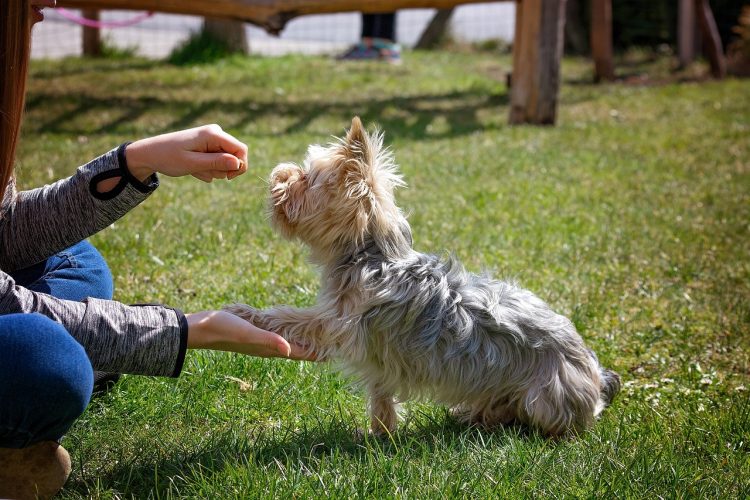Training your dog at home can be one of the most rewarding experiences for both you and your pet. A well-trained dog isn’t just obedient; they’re a happy, well-adjusted member of your family. When you invest time in teaching your dog, you’re not just building their skills—you’re strengthening the bond you share. Whether you have a new puppy or an older dog that needs some fine-tuning, these practical tips will help guide you through the process of training your dog at home.
Understanding the Basics of Dog Training
Before diving into specific training methods, it’s important to understand the basic principles that underlie successful dog training. Dogs learn through positive reinforcement, consistency, and patience. Positive reinforcement means rewarding your dog for good behavior—think of treats, praise, or even extra playtime. When your dog realizes that good behavior results in a reward, they’re more likely to repeat it.
Consistency is also key. All family members need to be on the same page when it comes to commands, routines, and expectations. For example, if you want your dog to stay off the couch, everyone in the house needs to enforce that rule. Lastly, patience is crucial. Just like humans, dogs learn at different paces, and setbacks are a natural part of the learning process. Keeping a calm and positive demeanor will encourage your dog to keep trying.
Setting Up for Success: The Right Environment
Creating the right environment for training is essential for both you and your dog. Choose a space that is free of distractions—a quiet room or backyard can be ideal for starting out. As your dog becomes more comfortable with commands, gradually increase the level of distraction to help them generalize the behavior in different environments.
Having the right tools can also make a difference. Keep a supply of small, bite-sized treats ready as rewards. A clicker can be a helpful tool for marking good behavior, as it creates a distinct sound that helps your dog quickly understand what they’re being rewarded for. You’ll also need a leash and collar for leash training and to maintain control during some exercises.
Start with the Basics: Foundational Commands
Begin training with basic commands that will form the foundation of your dog’s good behavior. Some essential commands to start with include:
- Sit: This is often the first command most dog owners teach because it’s simple and can be a building block for other commands. Hold a treat above your dog’s nose and slowly move it back over their head. As their head follows the treat, their bottom will naturally lower into a sitting position. As soon as they sit, say “Sit” and reward them.
- Stay: Once your dog has mastered “sit,” you can move on to teaching “stay.” Ask your dog to sit, and then open your palm toward them and say “Stay.” Take a small step back. If they stay put, reward them. Gradually increase the distance over time, always rewarding successful attempts.
- Come: Teaching your dog to come when called is important for safety. Start with a leash and let your dog wander a few feet away. Say “Come” in an enthusiastic voice while gently pulling on the leash if necessary. When your dog comes to you, reward them with praise and a treat.
- Leave It: This command is vital for keeping your dog out of trouble. Hold a treat in your closed hand and let your dog sniff it. When they lose interest, say “Leave it” and reward them with a treat from your other hand. This teaches them that ignoring an item can lead to a better reward.
Mastering these foundational commands can set the stage for more advanced training later on, while also keeping your dog safe and well-mannered in everyday situations.
The Importance of Socialization
Training isn’t just about commands—it’s also about ensuring your dog feels comfortable in various situations. Socialization is crucial for preventing fear and anxiety in dogs. Expose your dog to different people, places, sounds, and experiences in a controlled and positive manner. Take them for walks in new environments, let them meet other dogs, and introduce them to new experiences like car rides or even the vacuum cleaner. The more positive experiences they have early on, the more adaptable and confident they will be as adults.
Socialization should always be conducted in a calm and controlled way. For instance, if your dog is nervous around other dogs, introduce them slowly rather than forcing interactions. Let them observe from a distance until they’re comfortable enough to approach. Reward calm behavior with treats and praise to build positive associations.
Crate Training: Creating a Safe Space
Crate training is an effective method for many dogs. When used correctly, a crate becomes a comfortable, secure place for your pet—a space that they see as their own. Start by making the crate inviting, placing a soft blanket or a favorite toy inside. Leave the door open and allow your dog to explore it at their own pace.
Use positive reinforcement to encourage your dog to enter the crate willingly. Give them a treat whenever they go in, and gradually increase the time they spend inside with the door closed. Crate training can help with house training, managing anxiety, and ensuring your dog is safe when unsupervised.
However, it’s important never to use the crate as punishment. The goal is to create a positive association with the crate so that your dog feels comfortable and secure. Forcing a dog into the crate or using it as a timeout spot can create fear and resistance.
House Training: Patience is Key
House training, or potty training, is one of the first things many dog owners tackle. Consistency and patience are crucial here. Establish a routine by taking your dog outside at regular intervals—first thing in the morning, after meals, and before bedtime. Always use the same spot, as the familiar scent will encourage your dog to go.
When your dog successfully goes outside, reward them immediately with a treat and praise. Accidents will happen, especially with puppies, so it’s important to avoid punishment. If you catch your dog in the act, a gentle “no” can interrupt them, allowing you to guide them outside. Afterward, clean the area thoroughly to remove any lingering scent that might encourage repeat accidents.
Dealing with Problem Behaviors
Problem behaviors, such as chewing, barking, and jumping, are common, especially in younger dogs. Addressing these issues early is important to prevent them from becoming ingrained habits.
- Chewing: Dogs, especially puppies, chew to relieve teething pain or boredom. Provide plenty of chew toys and redirect their attention when they start chewing on something inappropriate. When they choose their chew toy instead of your shoe, reward them.
- Barking: Excessive barking can be a challenge. Try to identify the cause—whether it’s boredom, anxiety, or a response to external stimuli. For some dogs, teaching the “speak” and “quiet” commands can help regulate barking. Reward quiet behavior, and avoid yelling, which may escalate the situation.
- Jumping: Dogs often jump to greet people, but this can be problematic. Teach your dog that they only get attention when all four paws are on the ground. Ignore jumping and only reward calm behavior. Over time, your dog will learn that sitting politely leads to the attention they seek.
Making Training a Positive Experience
The most effective training happens when both you and your dog are enjoying the process. Keep sessions short, especially at first—around 10 to 15 minutes is ideal. This prevents your dog from becoming bored or frustrated. Always end on a positive note, with a command your dog knows well, so they leave the session feeling successful.
Positive reinforcement is your greatest tool. Treats, praise, toys, and even playtime can all be used to reward your dog for good behavior. Avoid punishment, which can damage trust and lead to fear-based behaviors. Remember, every dog learns at their own pace, and setbacks are part of the journey. Patience and consistency will ultimately lead to success.
Building a Lasting Bond
Training is about more than just obedience; it’s about building a deep, trusting bond with your dog. Dogs thrive when they understand what is expected of them and when they feel secure in their relationship with you. By investing the time and energy into training, you’re not only teaching your dog how to behave—you’re also showing them that they’re an important and loved part of your family.
Training your dog at home is a journey filled with challenges and triumphs. There will be moments of frustration, but there will also be moments of joy when your dog finally masters a new skill or follows a command perfectly. Celebrate those victories, big and small, and remember that every effort you make brings you closer together. With patience, consistency, and love, you can train your dog to be a happy, well-mannered companion who enriches your life in countless ways.










